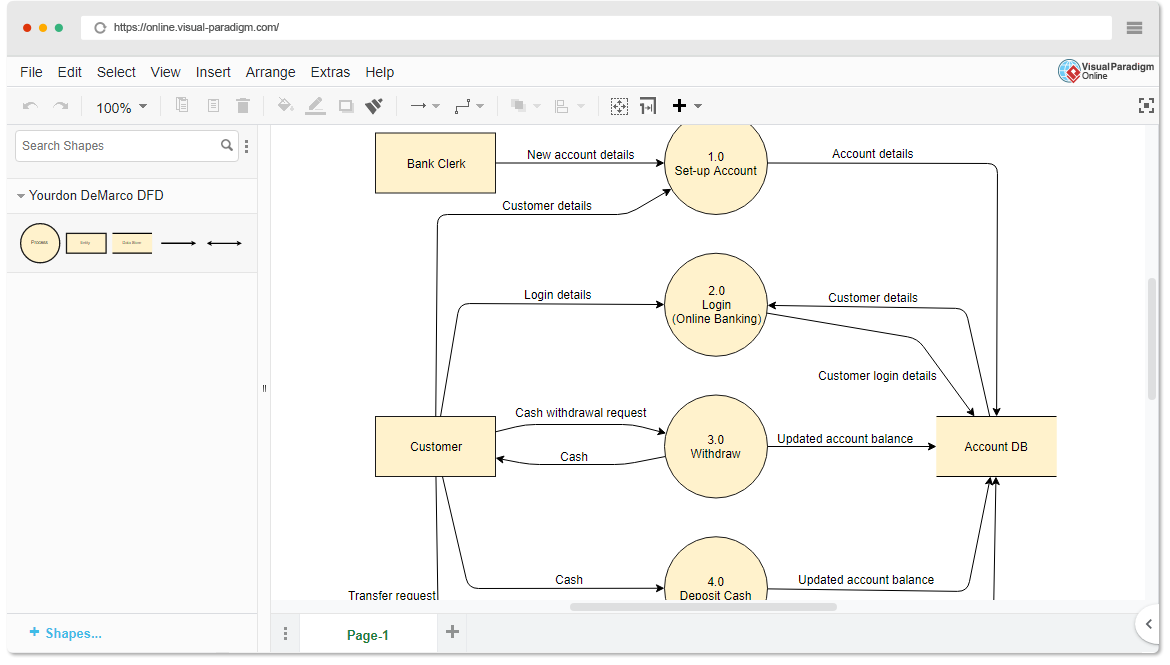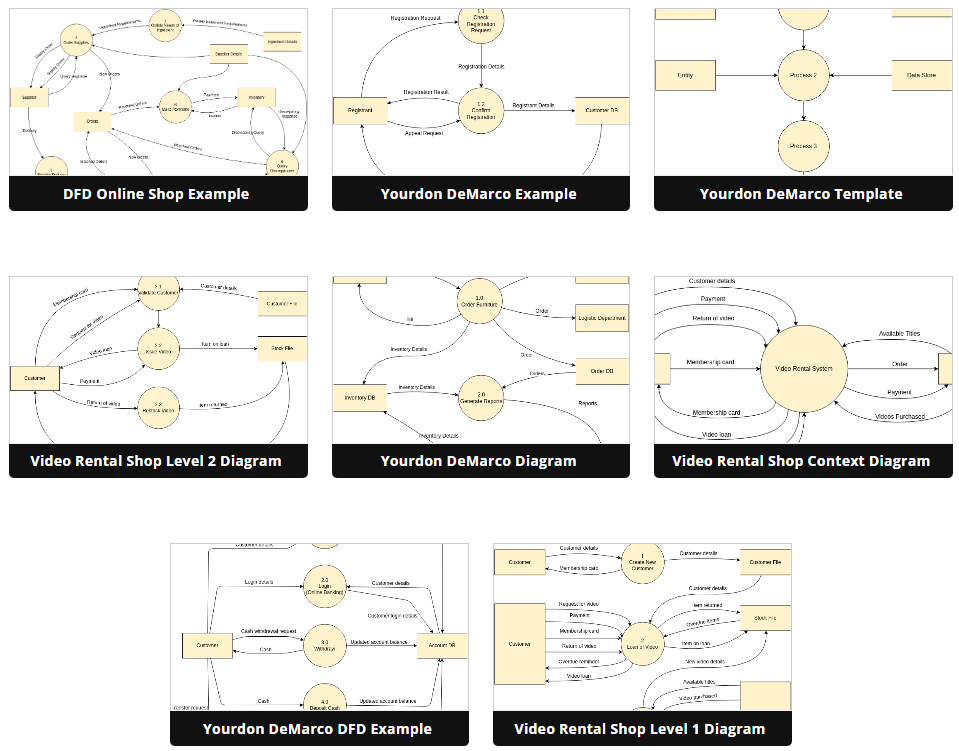Beginner’s Guide to Yourdon DeMarco DFD Diagrams
Introduction
Data Flow Diagrams (DFDs) are a valuable tool for visualizing and documenting the flow of data within a system. Yourdon DeMarco DFDs, named after their creators Edward Yourdon and Tom DeMarco, provide a structured way to represent how data moves through a system. In this beginner’s guide, we’ll introduce you to Yourdon DeMarco DFDs and show you how to create them using Visual Paradigm Online, leveraging its extensive collection of templates.
What is a Yourdon DeMarco DFD Diagram?
A Yourdon DeMarco DFD Diagram is a graphical representation of how data is processed and transferred within a system. It helps analysts, designers, and stakeholders understand the functional aspects of a system, highlighting data sources, processes, data storage, and data destinations. DFDs are commonly used during the early stages of system development to capture and communicate the system’s data flow.

Components of a Yourdon DeMarco DFD Diagram:
- External Entities: These are entities outside the system boundaries that interact with the system. They can be users, other systems, or data sources.
- Processes: Processes represent the activities or transformations that occur within the system. Each process takes input data, performs some operations, and produces output data.
- Data Stores: Data stores represent repositories where data is stored within the system. They can be databases, files, or any other form of data storage.
- Data Flows: Data flows depict the movement of data between external entities, processes, and data stores. Arrows represent the direction of data flow.
Creating Yourdon DeMarco DFD Diagrams with Visual Paradigm Online
Visual Paradigm Online is a powerful diagramming tool that simplifies the process of creating Yourdon DeMarco DFD Diagrams. Here’s how to get started:
- Sign Up for Visual Paradigm Online:
- Visit the Visual Paradigm Online website and sign up for a free account if you don’t already have one.
- Choose a Yourdon DeMarco DFD Template:
- After logging in, select “Create Diagram” from the dashboard.
- Choose the “Data Flow Diagram” category, and you’ll find a variety of Yourdon DeMarco DFD templates to start with.
- Add and Customize Elements:
- Drag and drop external entities, processes, data stores, and data flows onto your canvas.
- Double-click on elements to rename them and add descriptions.
- Connect Elements:
- Use arrows to connect data flows between external entities, processes, and data stores.
- Indicate the direction of data flow by adjusting arrowheads.
- Document Your Diagram:
- Visual Paradigm Online allows you to add documentation and comments to your diagram to provide context and explanations.
- Collaborate and Share:
- Collaborate with team members by inviting them to view or edit your diagram.
- Share your diagram with stakeholders for feedback and review.
Learning by Examples
Visual Paradigm Online provides a large collection of pre-made templates for Yourdon DeMarco DFD Diagrams. Learning by examples is an effective way to understand the concepts and best practices of creating DFDs. Here are some common scenarios where you can use templates:
- Order Processing System: Explore a template for an order processing system to understand how customer orders are handled, from order entry to shipment.
- Library Management System: Use a template for a library management system to see how books, patrons, and library operations are depicted.
- Inventory Tracking System: Review a template for an inventory tracking system to learn how inventory data flows through various processes.
By examining these templates and customizing them for your own projects, you can quickly grasp the principles of creating Yourdon DeMarco DFD Diagrams and apply them effectively to your system analysis and design efforts.
Conclusion
Yourdon DeMarco DFD Diagrams are a valuable tool for modeling data flow within a system. Visual Paradigm Online simplifies the process of creating these diagrams with its extensive collection of templates, making it easier for beginners to learn and apply DFD concepts effectively. Start exploring and creating DFDs today to improve your system analysis and design skills.


